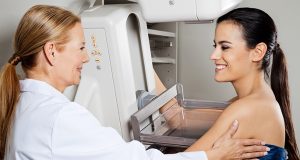 The American Cancer Society issued new guidelines for breast cancer screenings. It suggest’s that women should have mammograms starting at the age of 45. While others believe you should start at the age of 40, and even possibly earlier for those at high risk.
The American Cancer Society issued new guidelines for breast cancer screenings. It suggest’s that women should have mammograms starting at the age of 45. While others believe you should start at the age of 40, and even possibly earlier for those at high risk.
Mammograms have helped reduced deaths caused from breast cancer in the United States tremendously since the 1990s, according to the American College of Radiology. It’s been said these screenings can find tumors up to two years before you can!
We always suggest for you to talk with your doctor to see when the right time is to get your mammogram. All women should know the benefits, limitations, and potential harms that come with breast cancer screening. It’s always good to know what your breasts look and feel like. It’s the easiest way to know when something is wrong and you detect it immediately.
Women who are at high risk should be screened with MRI’s and annual mammograms. Here are some of those factors:
- Have a first-degree relative like a parent, brother, sister, or child with a BRCA1 or BRCA2 gene mutation, and you haven’t had any genetic testing.
- If you know you have the BRCA1 or BRCA2 gene mutation.
- Have a lifetime risk of breast cancer of 20 to 25 percent or greater, according to the risk assessment tools mainly based on family history.
- If you’ve had radiation therapy to the chest between the ages from 10-30.
- Have Li-Fraumeni syndrome, Cowden syndrome, or Bannayan-Riley-Ruvalcaba syndrome, or have first-degree relatives with one of these syndromes.
Be sure to schedule your mammogram the week after your menstrual cycle. Limit your intake of caffeine, smoking, and alcohol before your screening. Be sure to not wear deodorant because they can lead to false positives.